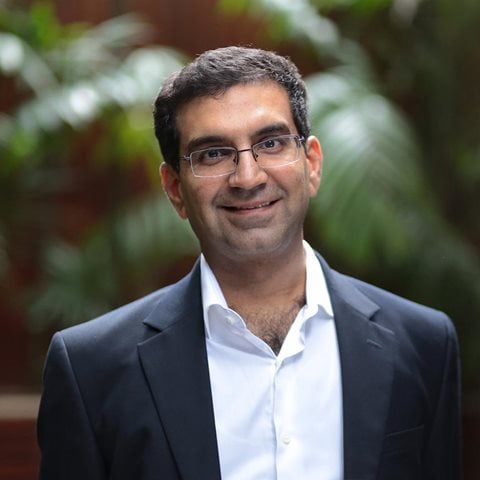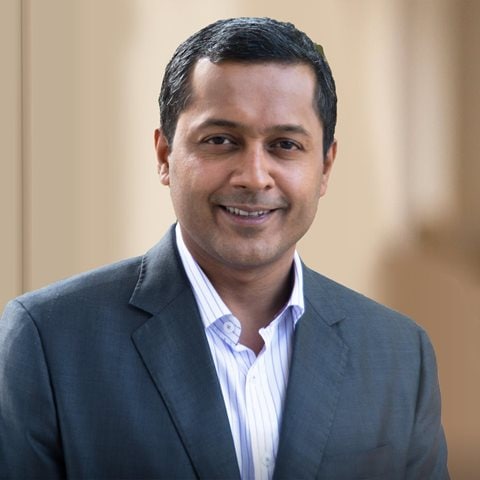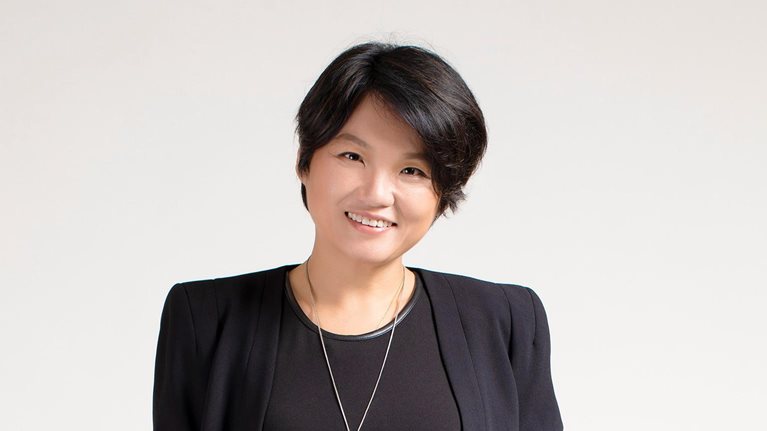“The best time to plant a tree,” a Chinese proverb reminds us, “was 20 years ago. The second best time is now.” The lesson resonates today in Asia. Leading companies are turning pandemic-driven changes into opportunities for future value creation. Part of the reason they can do so is that they have long been cultivating the roots that sustain a company’s ability to be nimble, aggressive, and decisive in the face of adversity and uncertainty. Another is that they’re setting their aspirations even higher now, and following through by making bolder commitments, moving faster, and scaling up. That’s why they grow while others wither.
The Asian corporate sector was in a difficult situation even before the COVID-19 pandemic. Some 50 percent of cumulative new global capital went to Asian companies in the past decade, yet the vast majority of Asian companies destroyed economic value, with most sectors losing between 30 and 50 percent of market capitalization. COVID-19 has widened the gap between those at the top of the power curve of economic profit and those at the bottom, a trend that is likely to accelerate in the postpandemic era.
To understand what it takes to manage successfully through the pandemic while also building for the future, we interviewed about 20 leaders of some of Asia’s top-performing companies. Without exception, these men and women believe that the pandemic is an inflection point and a catalyst, not a speed bump, turbocharging existing trends and making it all the more pressing for leaders to boost their companies’ performance. They’re confident that the best years for their businesses lie ahead and are doubling down on Asia’s future. In this article, we share the five big trends that these CEOs believe are shaping the future of the Asian corporation and examine how CEOs are scaling up the attributes they will need to steer a company to success in that challenging future.
1. Asia will determine the future of Asia
No matter where their company is headquartered and no matter what sector they serve, each leader we spoke with believes that a new macroeconomic context is emerging. Asia is trading with Asia. While many Asian companies are interdependent with companies around the world, all of the companies we spoke with are interdependent with other Asian companies. Their CEOs tend to perceive regional governments as value-adding stakeholders; the formation of the Regional Comprehensive Economic Partnership—the world’s largest free-trade pact, comprising 15 countries in the Asia–Pacific region—in November 2020 only augurs deeper integration. And while the CEOs allow that growth may not be as meteoric as in the recent past, they all agree that the Asian market will grow in global stature, given its youthful population, a rising middle class, and the market’s growing power. “If you look at both wealth formation and consumption,” said Piyush Gupta, CEO of Singapore’s DBS Bank, “Asia continues to outpace most other parts of the world.”
CEOs of Asian companies believe in such growth despite the socioeconomic challenges in some countries. “Even though, at the country level, you may see more nationalism, the strong trend at the lower levels is greater interdependency between companies,” said Won-Pyo Hong, CEO of Samsung SDS. As the McKinsey Global Institute (MGI) reported last year, 60 percent of goods traded by Asian economies are within the region, and 71 percent of Asian investment in start-ups and 59 percent of foreign direct investment is intraregional. “In the past, a lot of goods and services moved to the Western world,” said Jaime Augusto Zobel de Ayala, chairman and CEO of the conglomerate Ayala Corporation in the Philippines. “There has been a fundamental change in the trade patterns across Asia .... We have seen an increasing movement of trade not only among the Southeast Asian nations but also between, and to, India, China, Japan, and Korea.”
One frequently cited concern is geopolitical uncertainty. A 2019 MGI report analyzes the evolution of China’s relationship with the rest of the world, most notably with the United States. “COVID has exacerbated those tensions [between the two],” remarked Gupta. “A world where we have to start choosing sides could be tricky,” he continued. “We’re going to have to play it very carefully and tactically on a whole range of different issues.”
We are seeing a massive shift to online banking, digital person-to-person payment transfers, e-commerce, an increase in “do it yourself” stay-at-home activity, and commerce via social-media platforms.
Unpredictability is leading CEOs to reexamine their supply chains for resilience. “Companies don’t want to find themselves relying on a single country for critical supplies,” according to Christophe Weber, president, CEO, and representative director of Takeda Pharmaceutical Company, a Japanese pharmaceutical that switched to a dual-sourcing strategy six years ago. “We cannot just wait and see; we have to anticipate disruptions in the way we architect and design our supply chains.” Other companies, such as Samsung SDS, are also multisourcing. That said, expect supply chains to remain Asia-centric as companies choose to keep manufacturing and processing facilities close to their customers.
2. Data and digital innovation are transforming consumer journeys
Even before the COVID-19 outbreak, Asian companies were among the most technologically advanced, serving the world’s most digitally savvy consumers. The pandemic is accelerating those dynamics.
“We are seeing a massive shift to online banking, digital person-to-person payment transfers, [and] e-commerce, [along with] an increase in ‘do it yourself,’ stay-at-home activit[ies], and commerce via social-media platforms,” observed Zobel. Unsurprisingly, McKinsey’s consumer sentiment survey has shown that e-commerce usage has expanded in all countries during the COVID-19 pandemic, with consumers across Asia expected to increase their reliance on online channels. Added Scott Hahn, CEO of South Korean private-equity firm Hahn & Company: “Comfort with digital in Korea was somewhat demographic- and age-specific prior to COVID. Now, because of the pandemic, those who are older are doing a significant amount of their daily activities online.”
The shift has been remarkable. In Singapore, DBS Bank saw consumer use of its digital tools increase by up to 400 percent during the pandemic. State Bank of India (SBI), India’s largest bank, added more than 30,000 users per day on its YONO (you only need one) mobile app, which offers services for banking, investments, and trading, as well as a platform for online shopping. Online consultations on the Ping An Good Doctor telemedicine platform have surged eightfold since the start of the pandemic. Seeing the shift, companies in all kinds of industries have accelerated their investment in digital consumer offerings. India’s Tata Motors, for example, digitized the entire end-to-end process of buying a car, from selection to transaction to delivery. One of Hahn & Company’s portfolio firms is making rapid purchase and delivery of used cars faster than ever thought possible. Digital is now de rigueur. “Increased investment in digital capabilities is just the price you pay for entry to the park,” said Peter Harmer, managing director and CEO of Insurance Australia Group (IAG), citing the success of its consolidated customer-engagement platform, which accounts for around half of all customer interactions. “So one thing we’ll be doubling down on is finding extra investment capacity to accelerate what we’ve been doing through our digital channels to feed off of the customer behavioral change that’s definitely occurred.”
Asian CEOs say they are starting to see the payoff from investments in artificial intelligence (AI) and machine learning. Ping An Group’s co-CEO Jessica Tan said, “We’re trying to build analytics to help HQ be embedded in the front line, be it in sales, product, or risk management.” The strategy has allowed the company’s motor-insurance division to reduce its operations team by 32 percent, while still enjoying 50 percent growth every year. “In essence, we’ve more than doubled our productivity,” said Tan. Similarly, Samsung SDS expects to save around three million working hours in 2020 by incorporating robotic process automation into more than 26,000 projects. “Effectively, we’ve increased the number of employees by 10 percent,” said Samsung SDS’s Hong.
Much of that IT investment is enriched by Asia’s thriving digital ecosystems. SBI’s YONO app is constantly expanding its services to its customers and will soon launch a business-to-business platform in which AI and data analytics will power financing services for micro, small, and medium-size enterprises. “Our philosophy [around the YONO app] has been that whatever you imagine in terms of your daily needs, whatever you need to do, you should be able to do on one single platform,” said Rajnish Kumar, the recently retired chair and CEO of SBI. “The ecosystem approach gives us a chance to become much more integrated with where the end-user demand is,” added Tan. Ping An Group was originally founded as an insurance company in Shenzhen, but its investments to build digital platforms that other industry players can leverage has allowed the company to cross into other sectors including healthcare and smart city solutions. Southeast Asian mobility leader Grab has leveraged its reach and delivery network to create an “ecosystem of digital services” that now includes financial, grocery, and insurance services.
Increasingly, technology is enabling Asia to capture and create value. “While Western companies focused on value capture, Asian companies tended to be really focused on scale, size, and market share,” said Kiran Mazumdar-Shaw, the chairperson and founder of Biocon, the largest biopharmaceutical company in India. “The Indian pharmaceutical sector has a huge global market share of vaccines and generic drugs—50 percent and 20 percent, respectively—but when you look at the value capture, it’s only 3 percent. We need to know how to move up the value chain.”
No matter where their company is headquartered and no matter what sector they serve, each leader we spoke with believes that a new macroeconomic context is emerging. Asia is trading with Asia.
3. Scale—with a local touch—will consolidate power
The pandemic will create opportunities for stronger companies to consolidate and become bigger. “That’s principally because, while there’s a lot of debt floating around right now, there’s going to be the need to recapitalize large numbers of companies over the next year or two,” explained DBS Bank’s Gupta. “Many countries and sectors don’t have enough equity, and this will give rise to the opportunities to consolidate new global champions.”
A programmatic M&A strategy is one instrument companies may use to acquire new capabilities and grow in size. “M&A activity is almost a necessity now in Asia,” said Hahn. “Think of the emphasis on size; if you want to balance supply chains and do that quickly, you’re going to need to buy rather than build. Bigger companies have been able to respond faster. Size leads to speed, which leads to flexibility and increased adaptability.” Against a backdrop of shifting market dynamics, we’ve found that companies that keep their portfolios on the move—including being unafraid to divest and rechannel resources to where they predict value creation will be—tend to enjoy higher total returns to shareholders.
Acquisitions are just a starting point. Following its acquisition of the car website Autohome in 2016, Ping An incorporated it within the company’s offline and dealer platforms and grew it to become an integrated platform where users can also access financing and repair services. “Typically, when you buy a business at a reasonable price, they’re facing some bottlenecks in their growth,” said Tan. “The acquisition is really just a seed .... It doesn’t replace all the hard work that you will still have to do.” Since Autohome’s integration, its market cap has multiplied nearly fourfold. Being big, and especially being big in a digital ecosystem, should be a technological advantage. Reach and scale can generate the volume of data needed to create a “virtuous cycle” that helps to refine a company’s machine-learning technologies.
That said, being an Asian powerhouse also entails being a local listener and learner. “Asia is composed of diverse cultures and economies at different stages of development,” said Keith Choy, the regional head of GSK Consumer Healthcare in Asia–Pacific. “You have Australia, that’s more Western and developed; other developed countries like South Korea; and emerging and fast-developing countries like China and India. Not to mention the heavily populated countries of Vietnam and Indonesia.” Choy stressed that global companies such as GSK must be local to discern, adapt, and respond to customer preferences and needs while maintaining consistency with global branding and reputation. As Hong put it, global companies launching a product in a new market must “really understand the value of a product or service [in that particular market].” Four of Samsung SDS’s seven Lifestyle Research Labs are located in Asian cities (Beijing, Delhi, Seoul, and Singapore), and they are dedicated to parsing the nuances in the day-to-day habits and conditions of people living in key markets. For instance, air-conditioning units sold in India are installed with specially designed compressors that can withstand temperatures of more than 40 degrees Celsius.
4. Operating models will be optimized for speed, agility, and trust
Most companies in Asia have had to implement remote work to keep their employees safe. This unprecedented experiment has helped shift mindsets in profound ways, even as CEOs are still figuring out the exact role that remote work will play after the pandemic subsides. “This has been a good learning period,” said SBI’s Kumar. During the pandemic, SBI had to quickly equip staff with VPN-outfitted laptops to access full back-office functions securely. “We’ll build upon these learnings, and we’re reimagining the kind of capabilities that we can achieve to bring productivity gains to the bank. But we’ll need to design a system that can measure productivity, which is very difficult to do,” said Kumar.
The mindset shifts will alter operating models. As Ayala Corporation’s Zobel explained, “With the crisis, I had to advocate for a far shorter planning horizon.” His execution plans are implemented with weeks-long time frames and are subject to constant reviews and revisions.
To spur swifter decision making, leaders are flattening their organizational structure and pushing decision making down, trusting that employees on the front lines know best what to do. Teams within companies increasingly collaborate across functions in a synergistic way. As Tata Motors’s CEO Guenter Butschek put it: “The objective isn’t just to give direction. Much more important, it has been about hearing people, listening intently, and gaining a deeper understanding of their concerns, constraints, and risks—and, when possible, providing quantitative and qualitative support.” Similarly, at GSK Consumer Healthcare, top management provides guiding principles, while the leaders closest to the markets make and implement decisions. “Our decision tree is based on the empowerment of our people—the trust of the leadership in people on the ground,” said Choy. As another example, Ping An has been gradually moving toward an hourglass-shaped organizational structure, where middle managers function as “coaches” that help employees realize their potential.
[The pandemic] reinforces how we are all interconnected and responsible for one another in ways beyond what we might have envisaged—whether it’s employees, customers, suppliers, or communities.
To work, this kind of human-centered approach to management must be accompanied by training that prepares employees for the disruptions that technology may bring to their roles. Companies—including DBS Bank, IAG, and Samsung SDS—have launched initiatives to improve employees’ data literacy. “With this training, more employees will be able to understand the importance of data and how data must be handled to create more value,” said Hong, who hopes to turn every Samsung SDS employee into a data scientist. “We bring in the new technology to be proactive, but our employees benefit on a personal level by becoming more capable of doing more valuable and intelligent work. This allows them to make use of job opportunities within and even outside the company.” (For more, see “How COVID-19 is redefining the next-normal operating model.”)
5. Purpose will pay off in the short and long term
Each CEO we spoke with maintained that their company’s purpose proved essential for responding to the pandemic and would be equally central to creating resilience for the future.
During the pandemic, purpose helped companies prioritize on solutions for a variety of stakeholders. Leaders focused on helping employees and suppliers navigate the crisis. Ayala, for example, gave its 70,000 furloughed workers stipends to tide them through periods when work was halted, and BHP improved payment terms to suppliers during the outbreak. “People remember things like that,” said BHP CEO Mike Henry. “When they’ve seen that we’re there for them in their time of need, they’ll be there for us in our time of need.”
Many Asian business leaders say their companies’ purpose extends to society at large. Ayala partnered with the government to galvanize the wider community, and 270 private companies pooled their resources together to provide 9 billion pesos ($185 million) in aid to 2.8 million people in the Philippines. “Everyone understood they had a broader responsibility, and this created a very interesting dynamic in our country—a sense of common purpose and a coming together of different groups,” Zobel reflected.
In India, Tata Motors’s Butschek has had a similar realization: “[The pandemic] reinforces how we are all interconnected and responsible for one another in ways beyond what we might have envisaged—whether it’s employees, customers, suppliers, or communities,” he said. “We have worked hard to stand with our ecosystem partners, and I think this purposeful, ecosystem-centered approach is helping us weather the crisis—or at least weathering it better.”
The pandemic has also brought environmental, social, and governance (ESG) issues to the fore, and companies such as South32 and BHP see the benefits of factoring ESG into every company decision on the bottom line. Making ESG a line-accountable item can “lift what is already a substantial contribution to our stakeholders further without eroding short-term financial or operational performance. Over time, you build greater value and greater returns for shareholders,” explained Henry.
In some ways, the CEOs’ discussions of purpose bring us around once again to our first trend, the idea that interdependence will strengthen Asia. Several leaders described government initiatives that would play a key role in cementing a stable future for the private sector. They expect that Asia will continue to benefit from substantial investments and infrastructure spend. For instance, Thailand hopes to establish itself as an electric-vehicle hub, while China intends to attract $500 billion in investment for green infrastructure. These are public goods and private opportunities. As Hahn put it: “There is an opportunity for public and private sectors to collaborate. Collaboration doesn’t mean making a private company operate more like a public company. It means the public sector and private companies can work together.”
Large Asian companies, far more likely than Western ones to be family owned, have a history of robust public–private partnerships. Many of the CEOs we spoke with believe that this history of partnership will play a critical role in the postpandemic world. As DBS Bank’s Gupta said, “We’re thinking about every possible aspect [of public–private cooperation]: sustainability, supply chains, building and construction, the digital economy.” As Zobel told us, “Multiple stakeholders will need to come together to solve society’s pain points.”
Each CEO we spoke with maintained that their company’s purpose proved essential for responding to the pandemic and would be equally central to creating resilience for the future.
How to lead Asian companies in a post-COVID-19 world
The trends we’ve described will challenge leaders as never before. To capture Asia’s opportunity, companies will need to move quickly and boldly, adapt constantly, and collaborate deftly. In the wake of COVID-19, their CEOs will need not only to care for their people but also to energize them. We believe that five actions will be essential:
- Adopt both a telescopic and a microscopic perspective. The American futurist Roy Amara once noted that “We tend to overestimate the effect of a technology in the short run and underestimate the effect in the long run.” Similar dynamics will be at work in Asia writ large: we can safely predict that the trends we’ve described will play out over the long term, but we should also assume that there will be ample unpredictability along the way, particularly over the short term. An active board can be essential for enduring value creation. Even large public companies can take a lesson from family-run or, in India, promoter-led companies. As Sumant Sinha, CEO of ReNew Power, a renewable-energy company in India, pointed out, “Promoters tend to have a much longer-term mindset; they tend to think much more about the future than a management team might if it was driven by short-term results and incentives.” To be ready, CEOs and their boards—even while keeping their eyes trained on their companies’ long-term visions—are using both their telescopes and their microscopes to keep a close watch on not only what’s ahead but also what’s happening right now, in real time. Regularly deploying data analytics can deepen leaders’ understanding of changes in customer and employee engagement—nearly half of the top-performing companies we interviewed last year collect and analyze customer data weekly. And having a plan-ahead team can improve agility and help CEOs respond swiftly to abrupt trend breaks. Effective leaders strive to maintain close and frequent contact both with their boards (the more engaged the board, the better) and their leadership teams, be accessible to frontline staff, and know their customers as they know themselves. “You need to listen very humbly to your customers and partners [including employees],” said Samsung SDS’s Hong, “and then take action very quickly.”
- Implement bigger, bolder strategic moves. While it’s natural to want to act cautiously and conservatively when faced with uncertainty, we also know that now is the right time to execute seismic shifts in strategy. We’ve consistently found that companies boost their odds of success when they act bolder: reimagining their organizations along zero-based principles, amping up productivity to reach the top quartile of their industries or close to it, and implementing a programmatic approach to M&A, including divestitures. Our research also indicates that winners aggressively reallocate at least 60 percent of their capital expenditure among business units and refresh their portfolios over a decade, as well as embrace new technologies and make the most of a flexible and empowered workforce. Although big changes may feel intimidating, especially in times of unpredictability, successful CEOs are focused on reimagining what their companies can achieve. “If anything, COVID has taught us that we need to be even more aggressive and accelerate digitization even more,” said Ping An Group’s Tan. She should know. At the height of the pandemic in China, Tan had to enable her workforce of 1.5 million employees to do their jobs remotely within five days. “It’s become a bit of a joke between me and my tech team,” she said.
- Become a trisector athlete. Leaders need to be able to manage and create sustainable value for organizations, society, and government stakeholders over the long term. “The [pandemic] has accelerated engagement between the public and private sectors at the intersection of digital technology and healthcare experiences, and the future of care will demand rethinking core assumptions about the intersection,” added Shobana Kamineni, the executive vice chairperson of Apollo Hospitals in India, citing the example of a nationwide telemedicine platform comprising “a coalition of digital health companies and hospitals.” Like triathletes, CEOs must flex multiple muscles and run with an eye to resilience and sustainability. Long-term value creation requires that leaders manage beyond their firm’s four walls and recognize that by serving employees, customers, suppliers, and communities, they serve investors to maximum effect. “As an organization, we can only be as strong as our ecosystem,” said Butschek of Tata Motors, “and we are committed to coming out stronger after the crisis together.”
- Be the chief meaning maker. A compelling purpose is a difference maker; it not only focuses your organization but also acts as an engine for resilience and speed. “A clear purpose statement is a unifying statement and a benchmark to test decisions,” said Karen Wood, chair of the board of Australian energy company South32. Some steps CEOs can take include embracing diversity and inclusion (which has been found to correlate to a company’s performance), connecting your purpose to your company’s “superpower,” and getting the most from ESG to meet and exceed social expectations. Shareholders and society alike look to you for action and ballast over the long term. Effective leaders acknowledge the toll—both physical and mental—that the pandemic is having on us all. It’s become increasingly important to demonstrate traits such as “being supportive and caring,” “being employee focused,” and “promoting open and trusting environments.” Putting your company’s values into action now will have a lasting impact over the long haul. Wood described a three-pronged role for the board during COVID-19: “What do we need to do immediately to address the health crisis to keep our people safe and support local communities? What do we need to do in the medium term to make sure that our business is protected? And what does the long term look like? ... We do not want to lose the opportunity for a different conversation, a different way of thinking to come to grips with what the world is going to look like when we emerge on the other side of this.”
- Learn to walk the tightrope. The post-COVID-19 environment in Asia is simultaneously exciting and volatile, and leading a business in this climate is a balancing act: as a leader, you need to attempt to grow your company’s global presence but heighten its sensitivity to local tastes in new markets; warily eye geopolitical shifts while strengthening ties with Asian countries and companies; and consolidate power by doubling down on your unique strengths while simultaneously diving deeper into the digital ecosystems that are increasingly accelerating the Asian economy. Given that it’s easy to “stub your toes,” as Gupta put it, the modern Asian CEO needs nimble balance and the ability to discern and define a clear vision.
We do not want to lose the opportunity for a different conversation, a different way of thinking to come to grips with what the world is going to look like when we emerge on the other side of this.
The global impact of COVID-19 has been profound, obviously. In business, its short-term impact has been devastating for many companies. But in Asia, as in the rest of the world, leaders are using this period to distance themselves even further from the laggards by doubling down on attributes they believe will secure their place in a future that’s hard to divine and sure to be volatile. In so doing, CEOs and other business leaders are emerging from this difficult period with renewed conviction about what it takes to be a successful Asian company in the 21st century.





